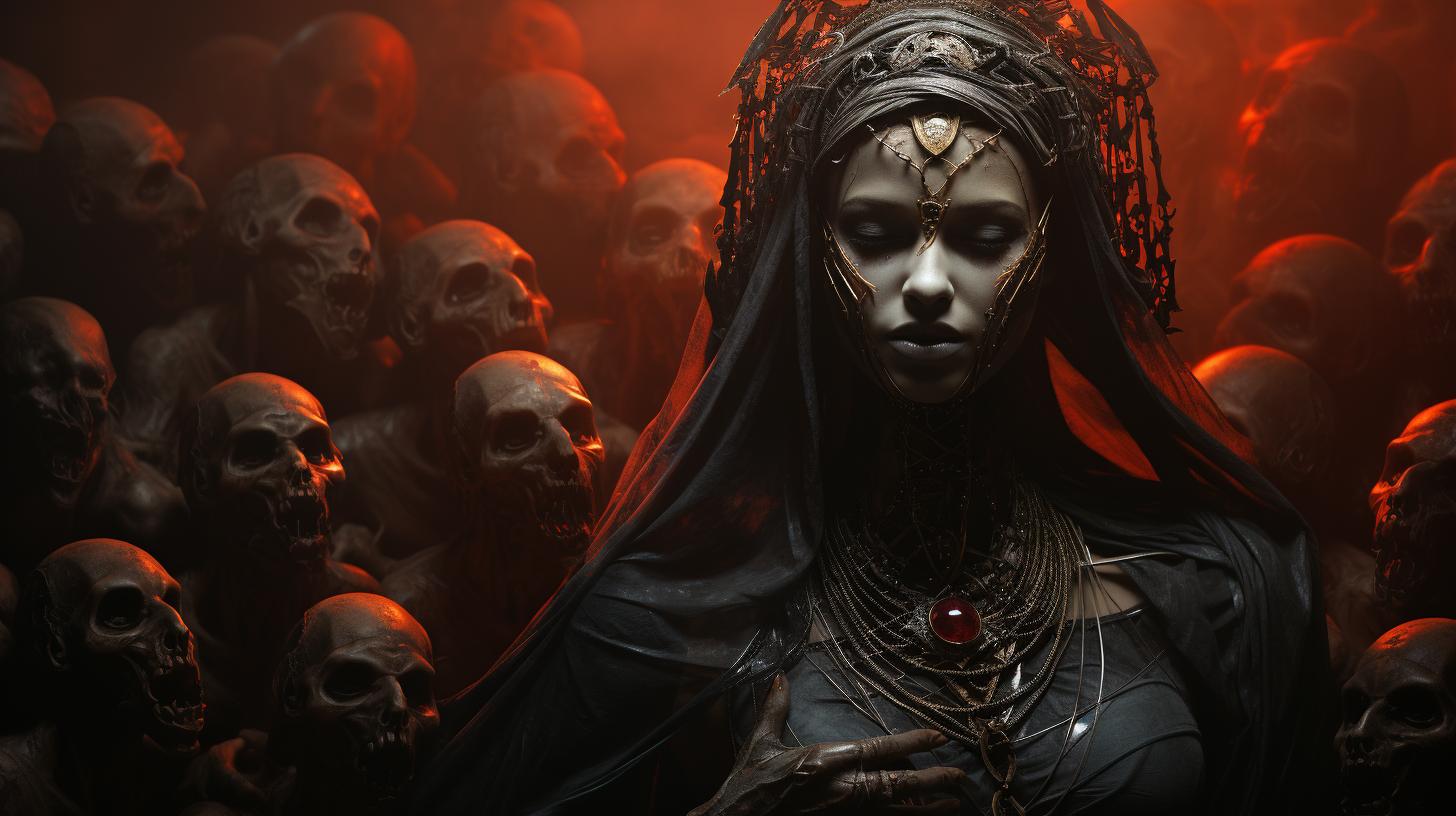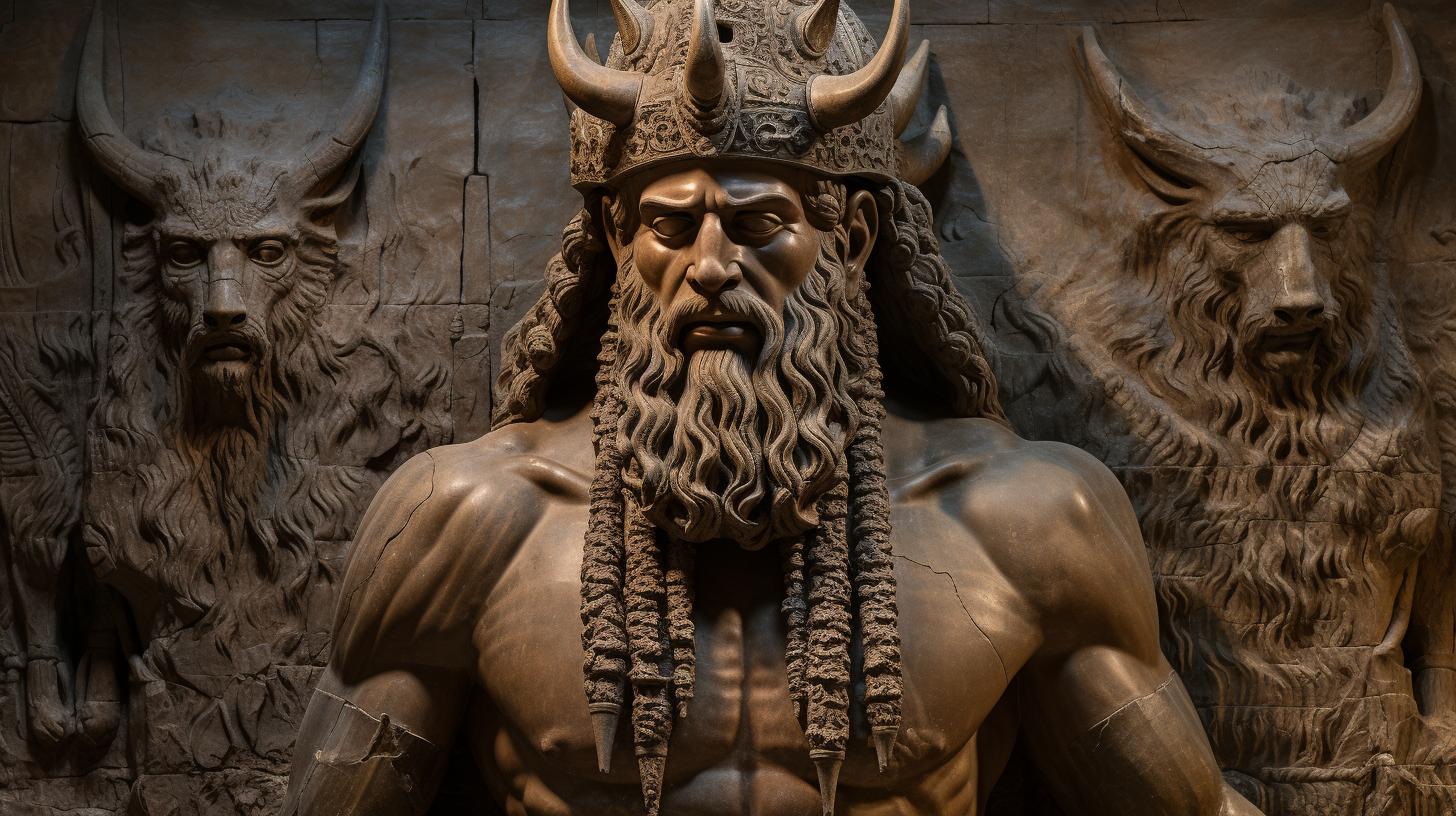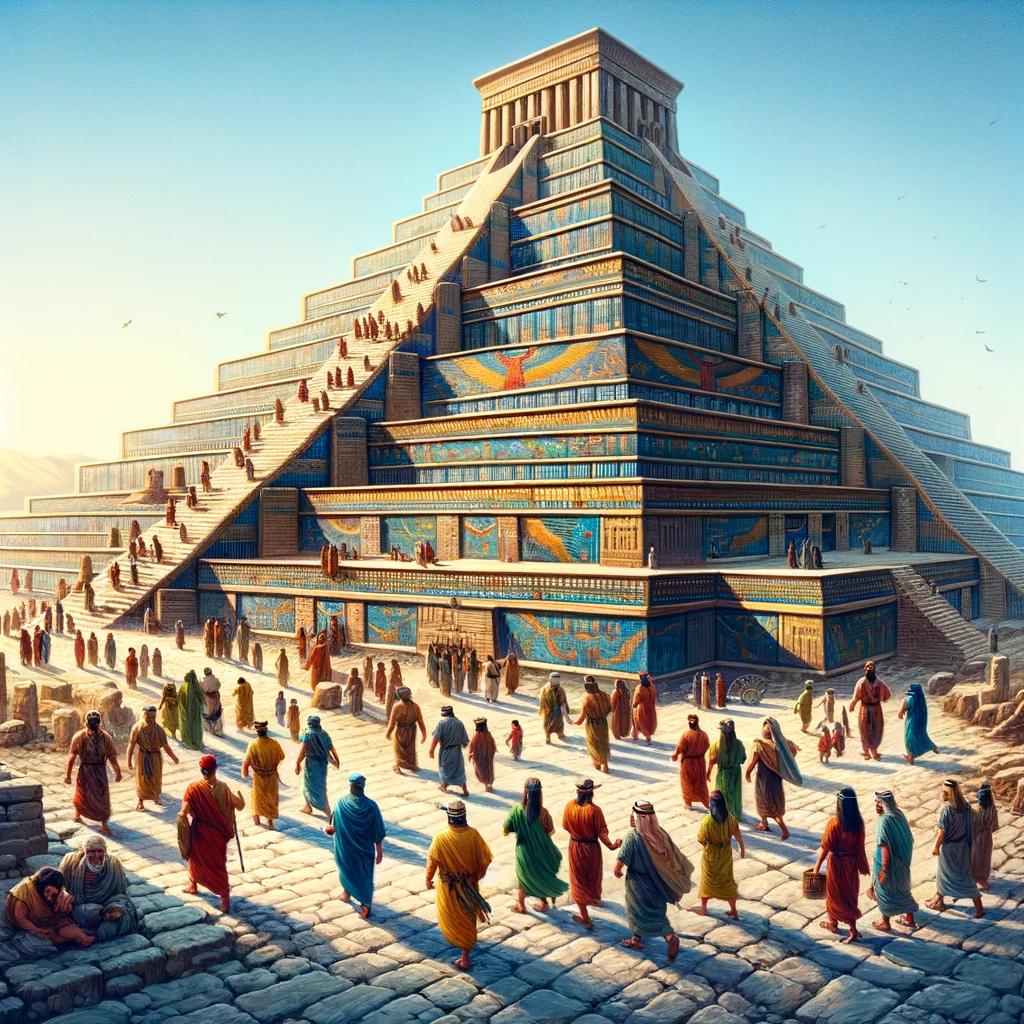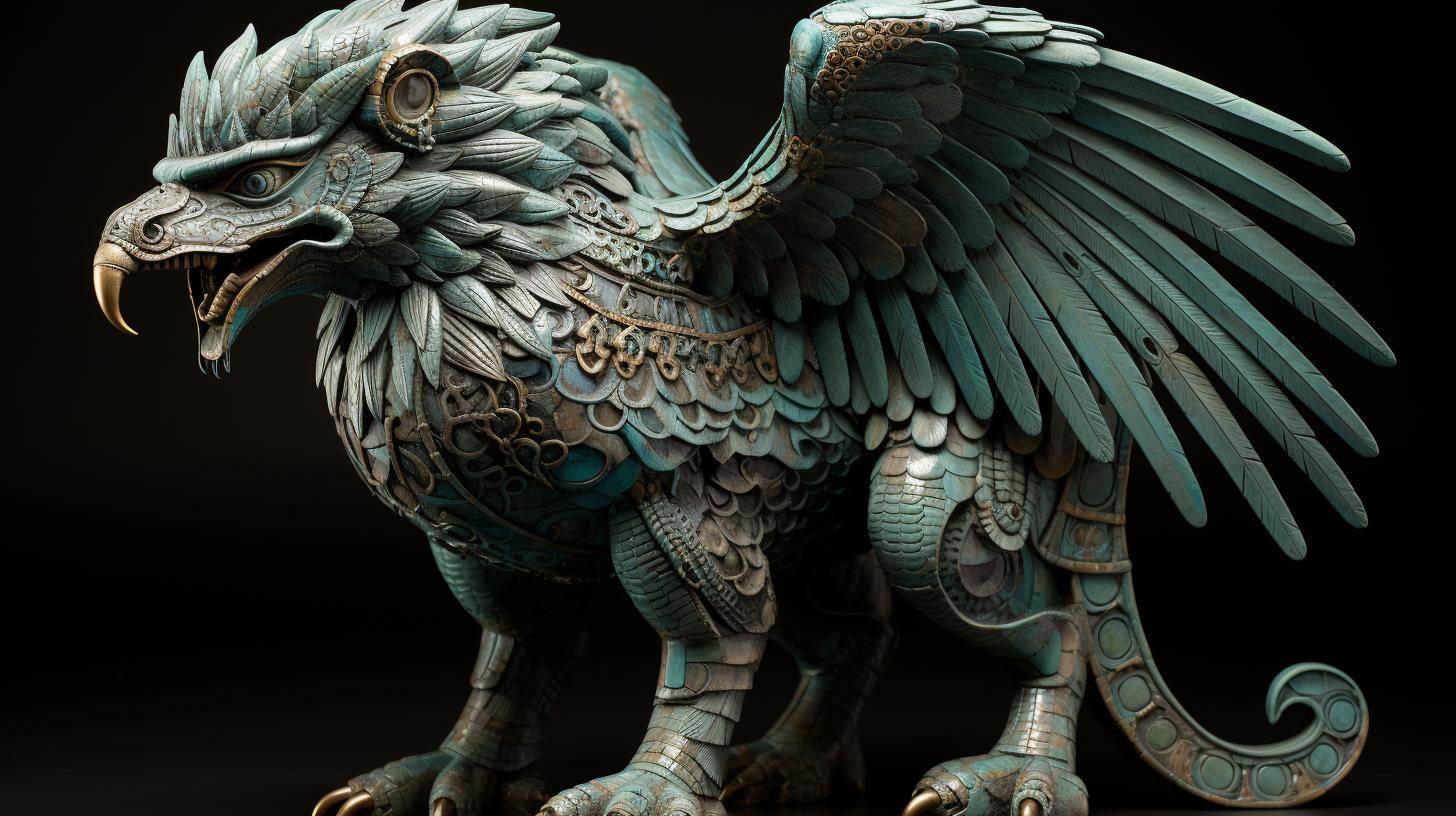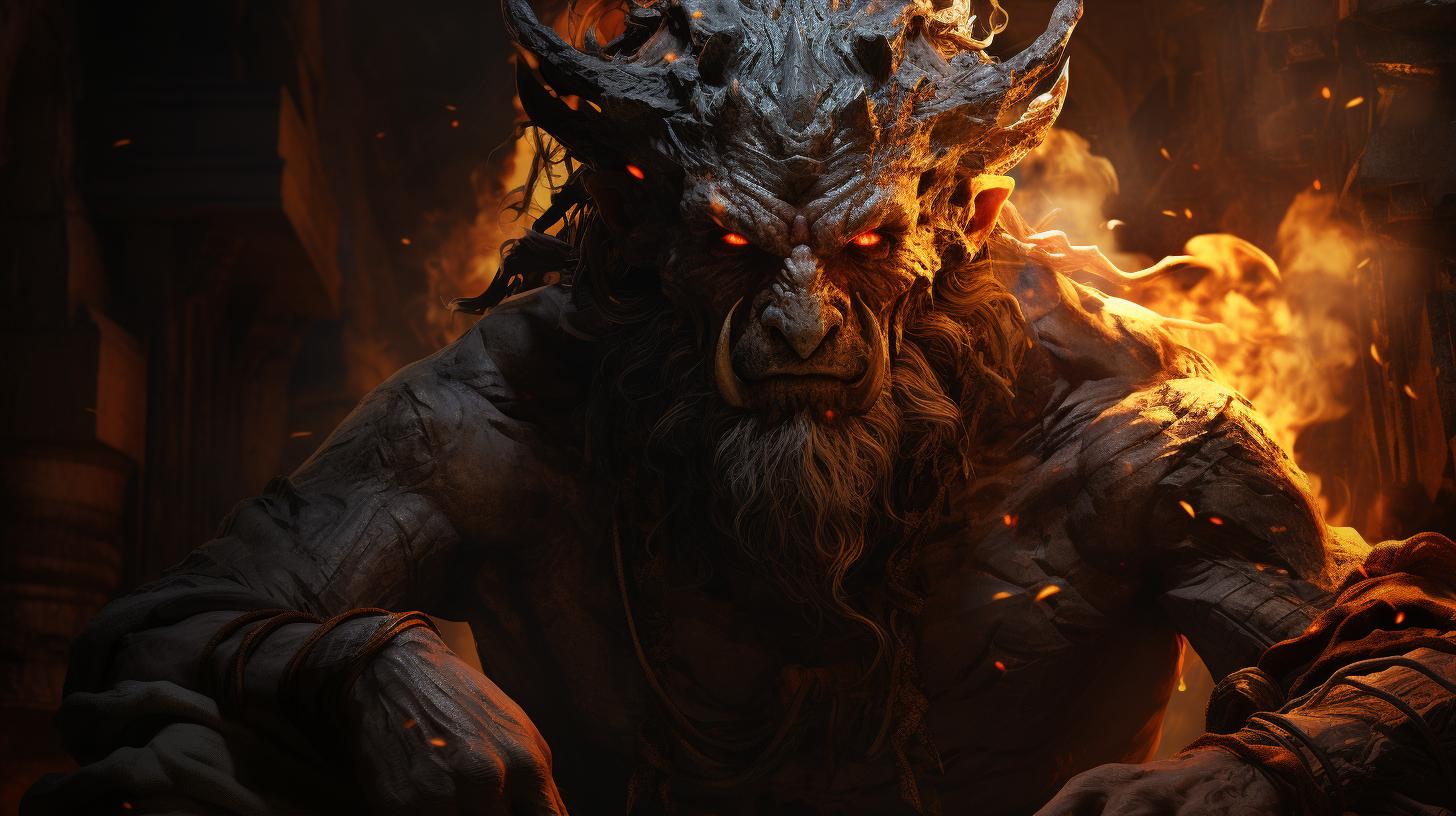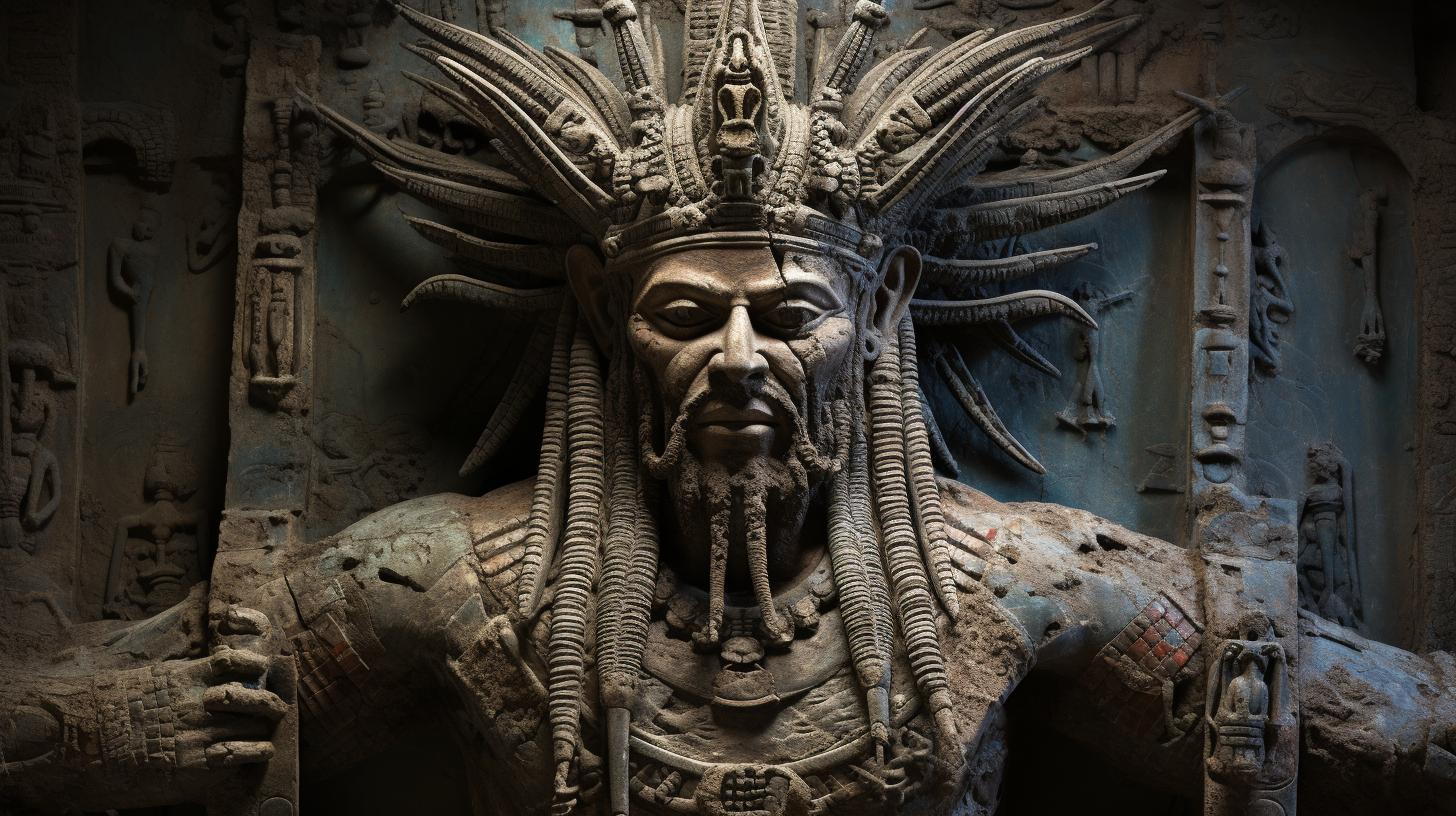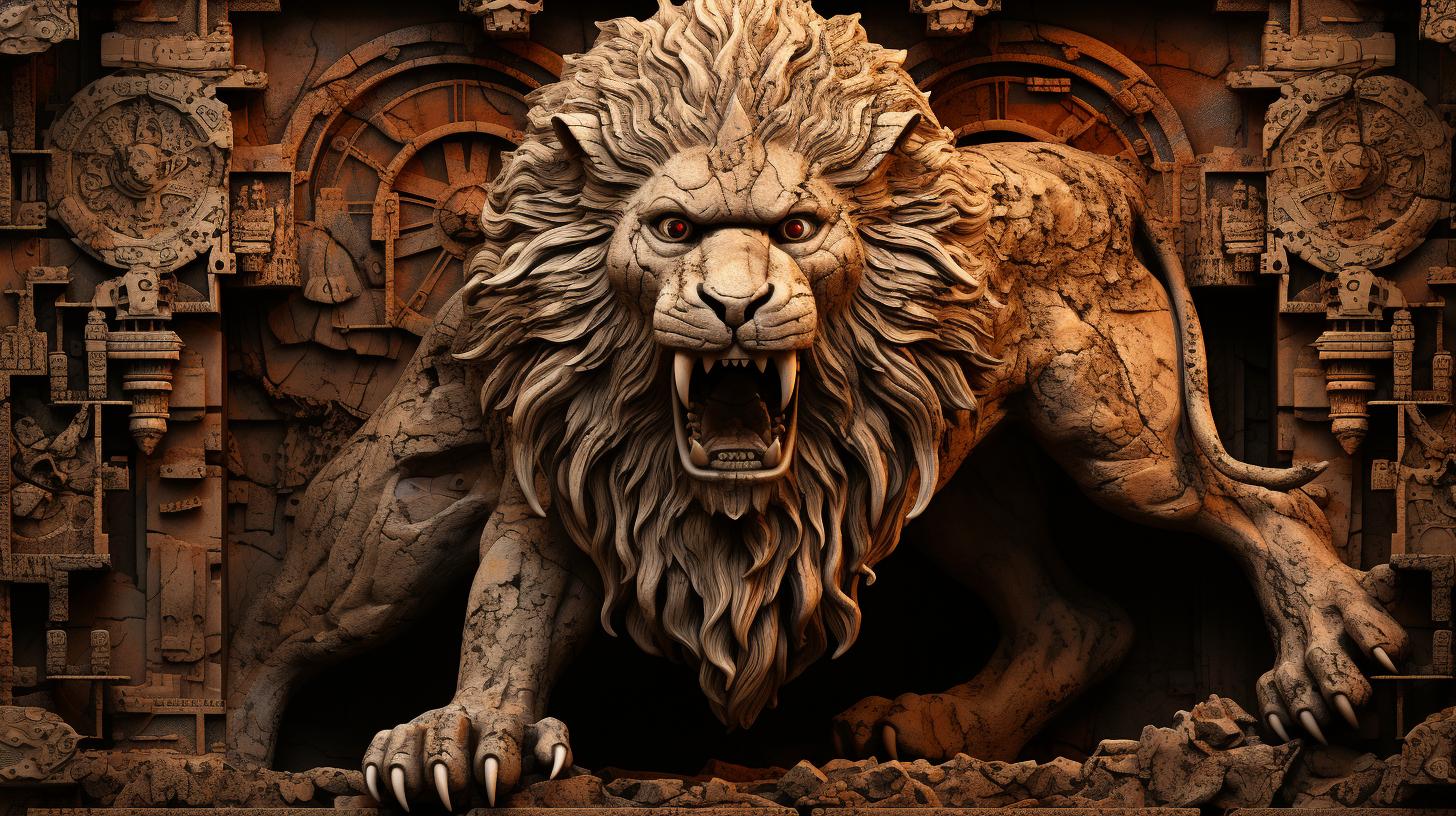Lamashtu Goddess: The Terrifying Demon Goddess of Mesopotamia
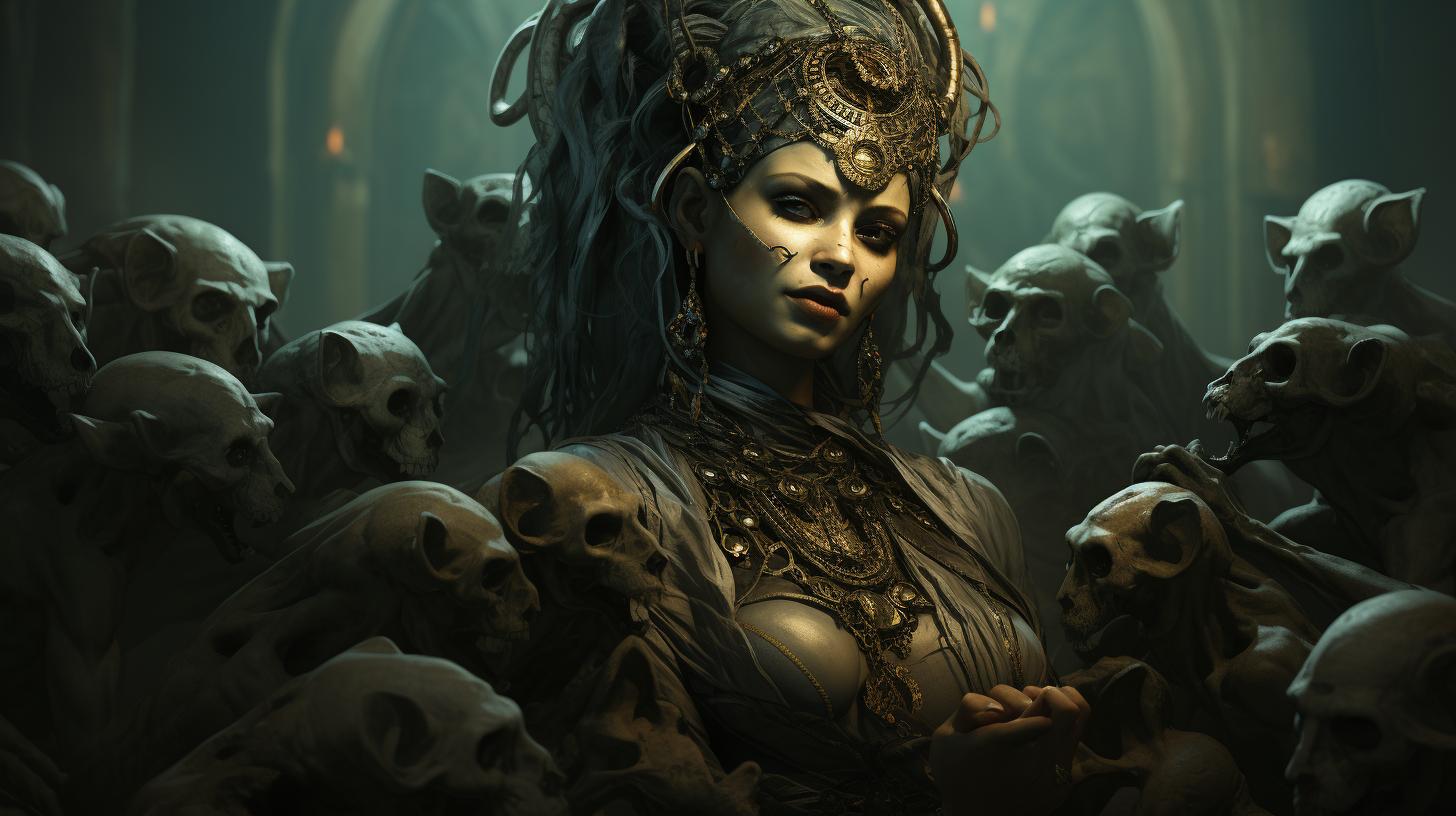
Lamashtu Goddess is a malevolent deity in ancient Mesopotamian mythology. Believed to be the daughter of the sky god Anu, she is known for her terrifying and evil acts.
This article provides an overview of Lamashtu’s mythology, her appearance and symbolism, as well as her rivalry with Pazuzu, the demon king of the Sumerian wind. Additionally, it explores Lamashtu’s threat to pregnant women and their babies, as well as her presence in modern culture, such as in the Dungeons and Dragons game and various works of fiction.
The Mythology of Lamashtu Goddess
Lamashtu Goddess is a malevolent deity deeply rooted in ancient Mesopotamian mythology. This section explores the origins, background, and significance of Lamashtu within this rich mythological tradition.
Origins and Background
The origins of Lamashtu trace back to the polytheistic beliefs of the ancient Mesopotamian cultures, including the Akkadians, Sumerians, and Babylonians.
Although the exact details of her origins remain unclear, she is believed to be the daughter of the sky god Anu. In Mesopotamian mythology, Lamashtu stands out as a unique and formidable figure, distinct from the benevolent deities worshipped by these ancient civilizations.
Lamashtu’s Place in Mesopotamian Mythology
Within the complex pantheon of Mesopotamian deities, Lamashtu occupied a distinct and feared role. Unlike the other gods and goddesses, she did not adhere to the established order and rules. Lamashtu had her own set of regulations, which often involved committing horrifying and malicious acts that struck terror into the hearts of ancient Mesopotamians.
The myths and legends surrounding Lamashtu depict her as a demonic entity responsible for carrying out acts of pure evil. From harming pregnant women and their unborn children to drinking the blood of men, Lamashtu was a source of nightmares, diseases, and death.
Her presence disrupted the natural order, with devastating consequences for those who crossed her path.
Lamashtu Goddess: Description and Symbolism
In this section, we will explore the physical appearance and attributes of Lamashtu, as well as her symbolic representation in Mesopotamian art and iconography.
Physical Appearance and Attributes
Lamashtu is depicted as a fearsome and malevolent being, embodying a hybrid creature with both human and animal characteristics. She possesses a black body covered in coarse hair, sporting the head of a lion with donkey-like teeth and ears, and bird-like feet adorned with long, twisted claws.
In her hands, she often holds serpents, accompanied by dogs and pigs. Notably, Lamashtu appears prominently pregnant, with her breasts covered by two skulls. She wields two infamous swords named Redlust and Chillheart.
Symbolic Representation in Mesopotamian Art and Iconography
Lamashtu’s depiction in Mesopotamian art and iconography served as a representation of her terrifying nature and association with evil. She often appeared in reliefs, sculptures, and talismans, aiming to invoke fear and warn of her destructive powers.
The imagery of Lamashtu symbolized chaos, disease, and death, as she was believed to bring about misfortune and harm. Her juxtaposition alongside Pazuzu, the demon of the wind, further emphasized the idea of balance and the opposing forces of good and evil.
l>
Lamashtu and Pazuzu: Rivalry and Counterbalance
Pazuzu Demon: An Opponent to Lamashtu
In the realm of Mesopotamian mythology, Pazuzu emerges as a formidable adversary to the malevolent Lamashtu. Pazuzu, the king of Sumerian wind demons, stands as a counterbalance against Lamashtu’s wickedness.
Unlike Lamashtu, Pazuzu is known to protect pregnant women and their children from harm, actively working to thwart Lamashtu’s wicked schemes.
Tales of Conflict and Alliance between Lamashtu and Pazuzu
Within the mythological narratives, tales of conflict and alliance arise between Lamashtu and Pazuzu. Some accounts speak of them being former lovers, but their relationship strained when Lamashtu killed an important deity.
This ultimate act sealed their rivalry, driving Pazuzu to become a staunch enemy of Lamashtu, dedicating himself to counteracting her malicious acts.
Despite their enmity, there are instances where Lamashtu and Pazuzu temporarily set aside their differences and form an intricate alliance.
These alliances often occur when a greater threat looms over the Mesopotamian pantheon. In these rare instances, they join forces to protect their realms and maintain the delicate balance in the realm of humans and gods.
- Pazuzu, the counterbalance to Lamashtu
- Lamashtu and Pazuzu’s complex relationship
- Their temporary alliances in the face of greater threats
This unique dynamic between Lamashtu and Pazuzu adds depth and complexity to the mythology, showcasing the ever-evolving interplay between opposing forces within the ancient Mesopotamian pantheon.
Lamashtu and Women: Themes of Motherhood and Protection
Within the realm of Mesopotamian mythology, Lamashtu, the malevolent goddess, held a particular threat to pregnant women and their children. Her dark intentions were tormenting to mothers, often resulting in tragic outcomes.
Understanding the depth of her influence and the measures taken to safeguard against her is crucial to grasp the significance of Lamashtu’s presence in the ancient world.
Lamashtu’s Threat to Pregnant Women and Children
Lamashtu’s infamy lay in her relentless pursuit to harm expectant mothers and their unborn children.
She would steal newborns or those still breastfeeding, causing devastating losses through miscarriages or the death of infants. The macabre nature of her actions extended further, as she would consume the blood and gnaw on the bones of the unfortunate babies.
Additionally, Lamashtu’s reign of terror encompassed drinking the blood of men, causing disruptive sleep and nightmares, inflicting harm on vegetation, contaminating rivers, and bringing forth diseases and death.
Examples of Lamashtu’s Atrocities:
- Abduction of newborns and breastfeeding infants
- Consumption of their blood and gnawing on their bones
- Drinking the blood of men
- Disturbing sleep and inducing nightmares
- Causing harm to vegetation and infesting rivers
- Inflicting diseases, ailments, and mortality
Rituals and Countermeasures for Protection against Lamashtu
Recognizing the imminent danger, ancient Mesopotamian societies devised numerous rituals and countermeasures to safeguard against Lamashtu’s malevolence.
These practices and beliefs offered solace and a glimmer of hope to expecting mothers, providing not only physical but also spiritual protection during these vulnerable periods.
Countermeasures and Protective Rituals:
- Amulets and charms adorned with symbols warding off evil
- Incantations and prayers invoking powerful deities to shield against Lamashtu’s influence
- Offerings and sacrifices to appease benevolent gods and seek their divine protection
- Scribbled protective symbols on walls and doors to repel Lamashtu
- Collaboration with priests and priestesses, who conducted special rites to fortify expectant mothers and their children
These measures aimed not only to provide physical protection but also to instill a sense of faith and hope, allowing women to face the daunting threat of Lamashtu with strengthened resolve.
Lamashtu Goddess in Modern Culture
Lamashtu Goddess, with her terrifying and malevolent nature, has made her presence known in various aspects of modern culture. From the realm of tabletop gaming to the realms of literature and popular culture, Lamashtu continues to captivate and intrigue audiences.
This section explores her depiction and influence in Dungeons and Dragons (DnD) as well as her broader impact in popular culture and fiction.
Lamashtu in Dungeons and Dragons (DnD)
Lamashtu’s dark and ominous presence can be felt in the popular tabletop role-playing game Dungeons and Dragons. She is prominently featured as a deity or fiend, often associated with evil and chaos.
In DnD lore, Lamashtu is depicted as a powerful demon goddess known for her cruelty, monstrous creatures, and dark rituals. Players can encounter her worshippers, monsters, and even face her directly as a formidable antagonist in their adventures.
Her influence extends beyond playable characters and scenarios. Lamashtu’s lore and imagery have inspired game designers, writers, and artists to create rich narratives and vivid illustrations. Her character traits of maternal horror, bloodlust, and grotesque appearance have become iconic within the DnD community, leaving a lasting impression on players and fans alike.
Influence of Lamashtu in Popular Culture and Fiction
The impact of Lamashtu extends beyond the realm of gaming, seeping into popular culture and fiction. Works of literature and media have drawn inspiration from her dark essence, incorporating her as a character or utilizing her themes of motherhood, terror, and the supernatural.
- Books and Novels: Lamashtu’s influence can be seen in various fantasy and horror novels, where authors have woven her into their fictional worlds. Her presence adds an extra layer of darkness and chilling suspense, creating a sense of primal fear.
- Movies and TV Shows: Lamashtu’s influence can be felt in horror films and television series, where her character or elements inspired by her mythology contribute to the eerie atmosphere and the portrayal of ancient evil forces.
- Art and Illustrations: Artists have used Lamashtu’s imagery as a source of inspiration, creating stunning and haunting visuals that capture her duality of horror and allure.
These artworks often serve as visual representations of the fear and fascination surrounding her.
With each new iteration and portrayal, Lamashtu continues to captivate audiences and leave an indelible mark on modern cultural expressions, solidifying her status as a powerful and enduring figure of dark mythology.
.

